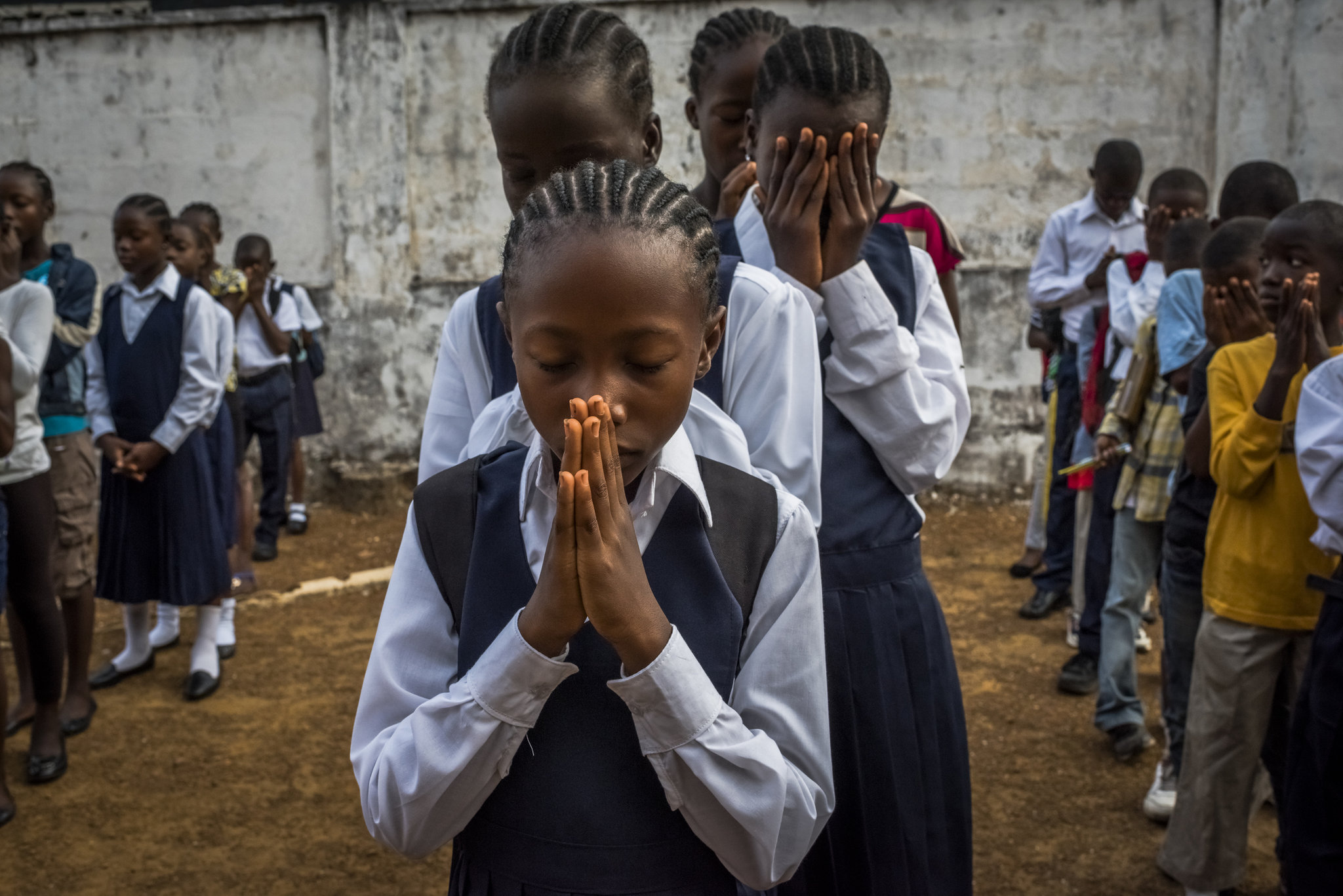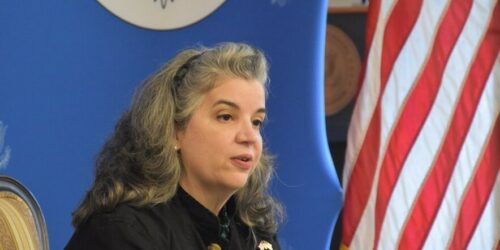Last year was tough for United Nations peacekeeping operations, especially in Africa.
In the Democratic Republic of the Congo, local people demonstrated angrily against the perceived inability of peacekeepers to protect civilians in the east of the country. In Mali, the junta government became increasingly hostile to the peacekeeping presence. In South Sudan, peacekeepers struggled to contain violence against civilians; and in the Central African Republic and Mali, peacekeepers must contend with the presence of mercenaries committing serious human-rights abuses.
To this catalogue of frustrations, we can add the resurgence of armed gang violence in Haiti. The UN has fielded six peace operations there stretching back to 1993. The last one, a 15-year presence, ended in 2019, under trying circumstances. Haiti’s relapse underlines the danger for countries afflicted by civil war of falling into conflict again, a syndrome that the World Bank calls the “conflict trap.”
While this snapshot is somber, two past UN operations leave room for optimism.
It is 20 years since the civil wars in Sierra Leone and Liberia ended. Those conflicts, in West Africa, featured punitive amputations, notorious “blood diamonds” and the tragedy of child soldiers forced to commit atrocities.
The wars spilled into neighboring countries, creating, according to Usaid, “one of the world’s worst crises.” A visiting Security Council team warned that “the stability of the sub-region was looking particularly precarious.”
So how have Sierra Leone and Liberia defied the odds to escape the conflict trap? Can they keep that status as they each face presidential elections later this year?
David Harris of Bradford University in Britain and I have attempted to discern and describe the principal factors that contributed to the post-war stability of Sierra Leone and Liberia. Four factors stand out. The most critical was post-conflict leadership and the legitimacy of government.
At the end of the respective wars, Presidents Tejan Kabbah of Sierra Leone and Ellen Johnson Sirleaf of Liberia faced deeply fractured societies traumatized by years of brutal violence and poor governance. Their administrations were certainly not flawless (allegations of corruption and nepotism dogged them), but they sought to build national cohesion, which their predecessors had conspicuously failed to do. As a result, they gained and retained a large measure of national support and the confidence (and resources) of the international community. At the end of their mandates, they had the eminent good sense to step down in accordance with term limits.
Since Kabbah and Johnson Sirleaf left office, elections have been held regularly in both countries, buoying the credibility of the democratic process. Most important, unsuccessful presidential candidates stayed in the political ring and later gained office.
Political leadership has not resided with politicians alone, however. A vibrant civil society, spurred by the activism of women’s groups, has helped to ensure that the transitions were not shaped exclusively by political elites. Local media, despite suffering episodes of repression, also spoke out critically of government.
The post-war security framework was an equally critical factor in the stability equation.
The disarmament, demobilizations and reintegration of armed groups was a crucial step. Combatants were offered demobilization grants, training and educational opportunities. Although the programs were viewed by many as rewarding criminals, they helped to prevent the re-emergence of armed groups that would have threatened stability.
The program alone, however, would not have sufficed to ensure stability. Security-sector reforms aimed at reconstituting and retraining the security forces (military and police) and rebuilding the support structures were equally vital for stability.
These reforms required a large investment in severance payments, vetting, training, equipment and logistics. They were made possible because such partners as the United States, Britain, the European Union and South Africa, collaborating with the UN peacekeeping missions on the ground, committed to long-term support for reform.
Transitional justice featured prominently in the post-conflict agenda as well. Both countries created truth and reconciliation commissions to determine the causes of the conflicts, to investigate gross human-rights abuses and violations of international humanitarian law and to make recommendations for remedial action. The commissions aimed to promote restorative justice by providing an opportunity for those who were harmed and those who caused that harm to communicate and address their needs in the aftermath of criminal acts.
The Sierra Leone commission was probably the more effective of the two, but most of its public hearings were held in the capital, Freetown, which limited their impact.
Only Sierra Leone pursued th
e route of retributive justice for war crimes. The government requested the UN to establish a special court to prosecute the crimes. The convictions (including of Charles Taylor, a former president of Liberia) were generally welcomed, although they encompassed only a small number of perpetrators considered the “most responsible.”
Liberia did not prosecute any individuals for war crimes. At the highest levels of government, there was an unstated fear that such trials might spark disruption and renewed violence. Fortunately, the trials and their verdicts did not prove disruptive in either Sierra Leone or have a spillover effect in Liberia.
Although they brought some solace to those who had suffered, overall, the transitional justice initiatives were not a determining factor in maintaining stability. Opinion surveys indicated that people felt safer but that was mostly due to the demobilization of armed groups and military reforms. The police remained mired in public discontent over abuses and corruption.
The rapid improvement of socioeconomic conditions undoubtedly aided stability. Economic growth rose quickly, through an influx of aid and improved security, which enabled better control of the political economy. Competent macroeconomic management enabled the approval of much needed debt relief.
Extreme poverty in Sierra Leone declined from 75 percent of the population in 2002 to 41 percent by 2012; life expectancy increased from 41 years to 51 years over the same period. Liberia’s extreme poverty rate dropped from 77 percent in 2003 to 43 percent in 2013, with life expectancy increasing from 53 to 61 years, according to the Our World in Data organization.
Several contextual elements distinctive to Sierra Leone and Liberia also fostered stability.
First, the conflicts in Sierra Leone and Liberia were not about imposing a vision on society. They revolved around struggles for state power and the material advantages that such power confers. So the conflicts could be resolved by political bargains largely unhindered by ideological, religious or secessionist demands, which would have proved much harder to accommodate or extinguish.
Second, the Security Council mostly agreed to support UN peace interventions and the post-conflict transition. Providentially, the Council did not cut and run when the peacekeeping missions ran into serious difficulties, unlike in Rwanda. Within the Council, Britain and the US provided strong diplomatic support for the operations.
UN Secretary-General Kofi Annan, being from West Africa (Ghanaian) was well placed to understand the challenges and to exercise well-informed leadership from the UN Secretariat.
Third, regional leaders and organizations, notably the African Union and the Economic Community of West African States (Ecowas), backed the UN interventions. Differences arose (the jurisdiction of the Sierra Leone Court was one), but they did not disrupt the generally good rapport between the UN and the African institutions.
Finally, Sierra Leone and Liberia are small countries with small populations. These facts of geography and demography played in their favor. The ratio of UN peacekeepers to land area and population were far more favorable than in bigger countries like the Congo. This gave the UN forces greater kinetic effect, allowing them to respond quickly to threats to peace.
Sierra Leone and Liberia will hold presidential elections this year amid increasing economic hardships caused by Covid-19 and Russia’s invasion of Ukraine, among other factors. The elections in June for Sierra Leone and October for Liberia will test the commitment of both countries and their leaders to the democratic progress that has helped them escape the conflict trap. Peace is never assured. But stability is a platform on which a peaceful future can be built, provided national will and political leadership can make that happen.
We welcome your comments on this article . What are your thoughts on the success in Sierra Leone and Liberia?
Alan Doss is the chair of the advisory board of the Oxford Global Society and former president of the Kofi Annan Foundation. He is the author of “A Peacekeeper in Africa: Learning From UN Interventions in Other People’s Wars.”
Optimism From West Africa: Sierra Leone and Liberia Have Escaped the Conflict Trap






